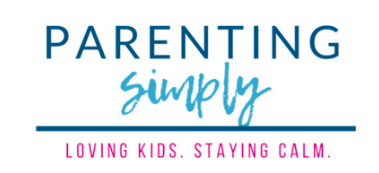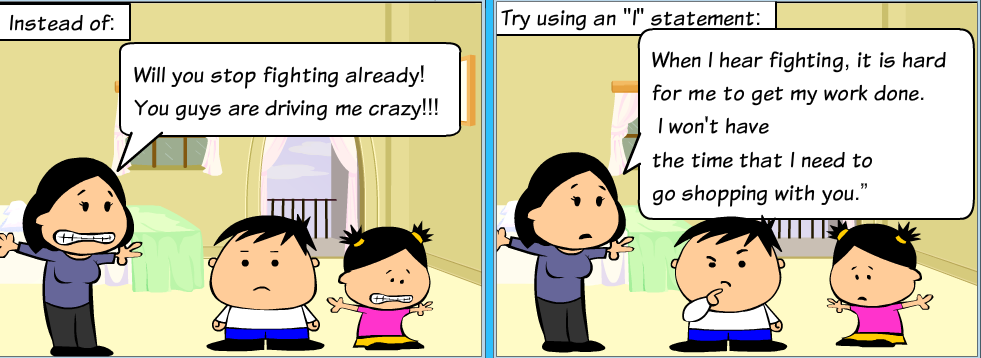Over the past few weeks I have been posting about the merits of the “I” statements. If you have been following then here is a great review. If you have missed my posts, here is what we have been talking about in a nutshell.
“I” statements are one of the best communication techniques around. It helps people express their needs and emotion in a non-confrontational and clear manner. It is probably the best way to prevent conflicts in interpersonal relationships.
According to Thomas Gordon, there are 4 different types of “I” statements or messages:
1.The Declarative I- Message:
This allows you to let other knows your beliefs, ideas, morals, likes, dislikes, thoughts and feelings without antagonizing others:
“I believe that it is important to help out around the house.”
“I think that having dinner together is the best way to keep our family strong.”
“I feel sad about the way I acted today.”
2. Preventative “I” Message:
These types of statements help you prevent trouble before it starts. You can use these messages to let your family know of what you will need in the future. This helps your family understand what you expect from them, which will increase the likelihood that they will cooperate.
“I want to know what your plans are this week so that I am available to take you where you need to go.”
“I am cooking a complicated dish in a few minutes. I will not be able to help anyone with anything in the next half-hour.”
“I am leaving to a meeting right after dinner this evening. I will need all hands on deck to help me get the table cleaned up so I can leave on time.”
3.Positive “I” messages:
This message allows us to let our loved ones know how much we love and appreciate them:
“I appreciate that you played quietly with your sister.”
“I appreciate that you came right when I called you.”
4. Confrontive “I” message:
This helps parents handle misbehavior in a firm, calm manner.
“When I hear fighting, it is hard for me to get my work done. I won’t have the time that I need to go shopping with you.”
“When I see children jumping on the bed, I get upset that the bed will break and children will be hurt.”
I didn’t know that there were so many ways to use the “I” statement. What a versatile skill. It is a little technical in its breakdown but interesting nonetheless.
I hope you enjoyed. If you want great parenting tips sent to your inbox once a week, don’t forget to sign up for our newsletter here.


